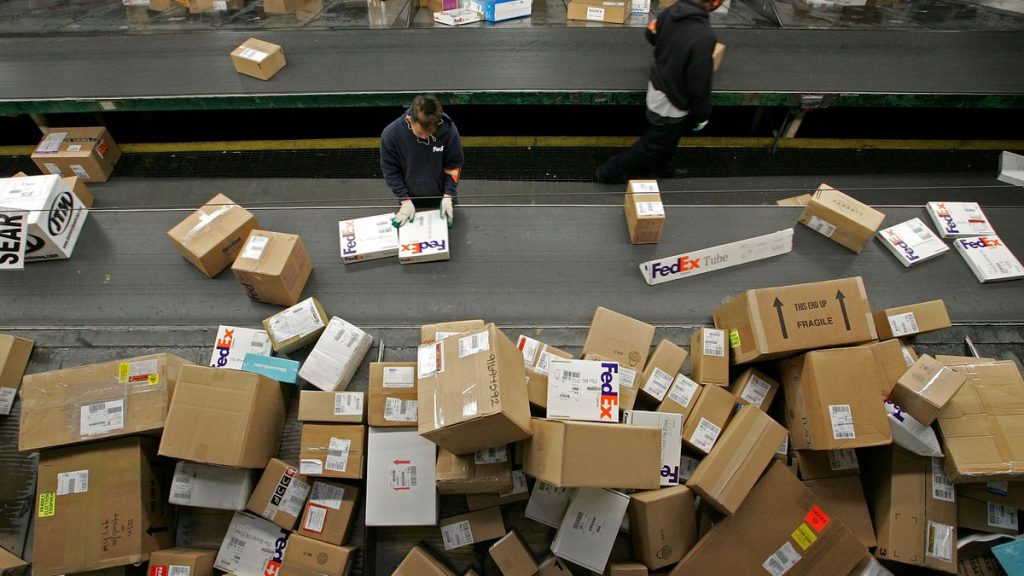
By Max Garland
As demand for FedEx’s shipping services continues to freefall, a revamp of the company’s operations and networks is underway to reduce billions of dollars in costs over the long term.
The delivery boom of the COVID-19 pandemic has faded for FedEx and other parcel carriers, and volumes continue to soften as shippers prepare for an economic downturn. The logistics giant is hunkering down in this uncertain environment with a barrage of near-term cost-cutting measures, including service reductions, layoffs and fewer flights.
All the while, FedEx is set to institute major long-term changes at its Express, Ground and Freight operating units through its “Network 2.0” initiative and a program called DRIVE, which the company is slated to provide more details on later this year.
The way President and CEO Raj Subramaniam sees it, FedEx is in the midst of transforming into the most flexible, efficient and intelligent supply chain for its customers.
“This process is critical to ensure we remain competitive in a rapidly changing environment, and it requires some difficult decisions,” Subramaniam said in a Feb. 1 message to employees announcing layoffs.
As the vision of a transformed FedEx comes to life over the next several years, the daily flow of millions of packages will look quite different from today’s operations. But it won’t be easy for FedEx’s pursuit of efficiencies through DRIVE and Network 2.0 to be realized without a hitch, considering the size of the overhaul.
“Reorganizations and network optimizations of this scale are rare, for sure,” said Anthony DeRuijter, an analyst at Third Bridge.
DRIVE targets operational changes across units
Faced with an uncertain future for the global economy, FedEx is focused on what it can control: Reducing structural costs and driving profitable growth, Subramaniam said on a December earnings call.
The company seeks to execute that through a wide-ranging program called DRIVE, which centers around trimming expenses by improving efficiency throughout its operations. FedEx expects the program to reduce its costs by more than $4 billion by fiscal year 2025 and lay the foundation for Network 2.0, in which the company will consolidate stations and delivery routes.
FedEx has identified three different areas of the company — Express, Ground and shared and allocated expenses — that DRIVE will target. Changes within these areas span from digitizing customer support functions to using new processes to increase packages per Ground linehaul trailer.
A large chunk of the program will focus on restructuring Express’ network by reducing routes and more efficiently deploying crews, aircraft and commercial linehaul, CFO Mike Lenz said in a September earnings call. Express saw its operating income fall by 64% YoY in its most recent quarter, and the company is already parking planes and cutting flight hours to reduce expenses.
Over the long term, DRIVE will help the Express air network become more agile when demand changes and make it better suited to handle increased interest in deferred, or less time-sensitive, shipping services. Companies have been more willing to sacrifice shipping speed for lower-cost deferred services amid inflationary pressures.
“How do we change our networks firstly to improve our loaded density and then how do we use partner network especially to move deferred traffic?” Subramaniam said DRIVE’s Express priorities.
FedEx plans to host a call providing deeper insights into the DRIVE program in the first half of 2023, Subramaniam added.
An ideal time for change, if FedEx can deliver
The ability for companies to optimize their business operations have improved with advances in data analytics, allowing companies like FedEx to more effectively tackle larger-scale problems than they could in years past, said Amelia Regan, director of the University of Washington’s Supply Chain Transportation and Logistics Graduate Degree Program. And now, with delivery demand falling off, FedEx can take a more thoughtful look at how to adjust its network for an uncertain future.
“It’s the best possible time for companies to regroup and improve the efficiencies of their operations,” said Regan, who previously worked for UPS’ Operations Research Group.
Even in an opportune time for reorganizing, FedEx faces hurdles in both execution and demand trends as it kicks off DRIVE and Network 2.0, analysts say.
FedEx runs the risk of losing long-term business relationships if it doesn’t have adequate capacity to serve certain routes, DeRuijter said. He added that FedEx leaning more on Ground to deliver Express packages could place an additional burden on delivery contractors, many of whom have grappled with rising costs and softer volume levels over the past year.
“There’s just a lot of actual operating hurdles that will be challenges based on what our experts see and say,” DeRuijter said.
Customers could notice the effects of FedEx’s pursuit of efficiencies in instances it “opts for slower but cheaper freight transportation through its own network while relying less on faster but more expensive” third-party services, said CFRA Research Vice President Colin Scarola in an email. However, the largest cost-savings move is likely to be Express downsizing its flight operations as demand continues to fall, he added.
“Because most of the DRIVE cost cutting will be tied to shrinking Express volume, and not be matched with organic growth, the long-term profit trend for FedEx is not likely to be great even with a successful DRIVE initiative, in our view,” Scarola said.
In a statement regarding potential service impacts of DRIVE and Network 2.0, FedEx said it will maintain a customer-centric philosophy and that its transformation plan will make the company “stronger, more streamlined, and more adaptable to customer expectations and market demands.”